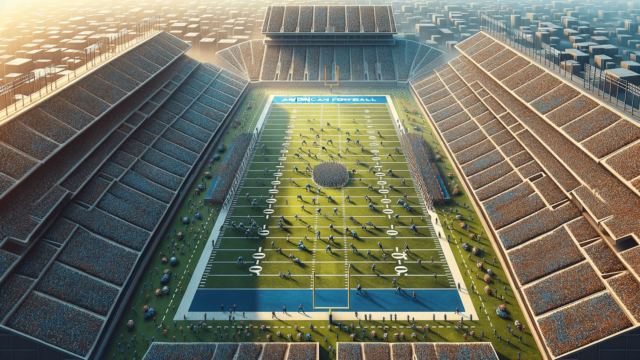
A standard football field is approximately 0.71 hectares.
Understanding Football Field Dimensions
Football fields have standardized dimensions that help in maintaining uniformity across different leagues and competitions. FIFA regulations mandate that the length of a football field should be between 100-110 meters (100-120 yards) and the width should be between 64-75 meters (70-80 yards).
Hectares and Football Fields
A hectare is a unit of area measurement equal to 10,000 square meters. To determine the size of a football field in hectares, one needs to calculate the field’s area in square meters and then divide by 10,000.
Step 1: Calculate the Area of the Football Field
Let’s use the average dimensions for a football field, which are 105 meters in length and 68 meters in width. The area of the football field is:Area = Length × Width = 105 meters × 68 meters = 7,140 square meters.
Step 2: Convert Square Meters to Hectares
Next, divide the area calculated in step 1 by 10,000 to convert it to hectares:Hectares = Area ÷ 10,000 = 7,140 square meters ÷ 10,000 = 0.714 hectares.
Football Field Size in Hectares
A football field with average dimensions is approximately 0.71 hectares in size, although this can vary slightly depending on the specific dimensions of the field.
Impact of Field Size on Football Gameplay
Different dimensions of football fields can have a subtle but noticeable impact on the way a match is played. Wider fields allow for more room to maneuver and can benefit teams that rely on utilizing the entire width of the field with effective wing-play. On the other hand, smaller fields can make it more difficult for teams to find space while attacking, leading to a more compact and tighter game.
Non-Standard Football Field Sizes
While most football fields abide by FIFA’s standardized dimensions, there are instances where fields might not fit within the prescribed size range. Such non-standard fields can be found at lower league levels, in youth and amateur football, or on non-regulation pitches for recreational play. It is essential to note that the area in hectares of these non-standard fields will differ from the average football field size.
Comparing Football Fields to Other Sports
When comparing the size of a football field to other sports, it is evident that football requires a larger playing area. For instance, rugby fields are slightly larger, typically measuring around 0.82 hectares, whereas a cricket outfield is much larger at around 1.8 hectares. Understanding the differences in sports field sizes can give valuable context when discussing the physical demands and tactical implications of different sports.
Maintenance and Cost Implications
The size of a football field in hectares may also have an impact on maintenance costs and resource requirements. A larger field will require more time, manpower, and resources for tasks like mowing, marking, and irrigation. These factors can be crucial for clubs, educational institutions, and local authorities when budgeting for the upkeep and management of their football facilities.
FAQ Section: Hectares and Football Field Dimensions
The following Frequently Asked Questions (FAQ) address common concerns readers might have about the size of a football field in hectares and its implications on various aspects of the game.
1. What are the FIFA standard dimensions for a football field?
The FIFA regulations stipulate that the length of a football field should be between 100-110 meters (100-120 yards), while the width should be between 64-75 meters (70-80 yards).
2. How do I calculate the area of a non-standard football field in hectares?
First, measure the length and width of the non-standard football field and multiply them to find the area in square meters. Then, divide the resulting value by 10,000 to convert the area to hectares.
3. Do all football leagues worldwide adhere to FIFA dimensions?
Most professional leagues and competitions follow FIFA’s standardized dimensions; however, lower league levels, youth and amateur football, or non-regulation pitches for recreational play might not always adhere to these dimensions.
4. How does the size of a football field affect its maintenance cost?
A larger football field requires more time, manpower, and resources for tasks such as mowing, marking, and irrigation. This increases the overall costs for maintenance, and should be taken into account by clubs, educational institutions, and local authorities when budgeting for their facilities.
5. Are there any tactical advantages to playing on larger or smaller fields?
Yes, different field sizes can impact gameplay. Wider fields provide more room to maneuver and benefit teams with effective wing-play, while smaller fields lead to more compact and tighter games, making it challenging for teams to find space while attacking.
Featured Posts
- No pillar pages found.





